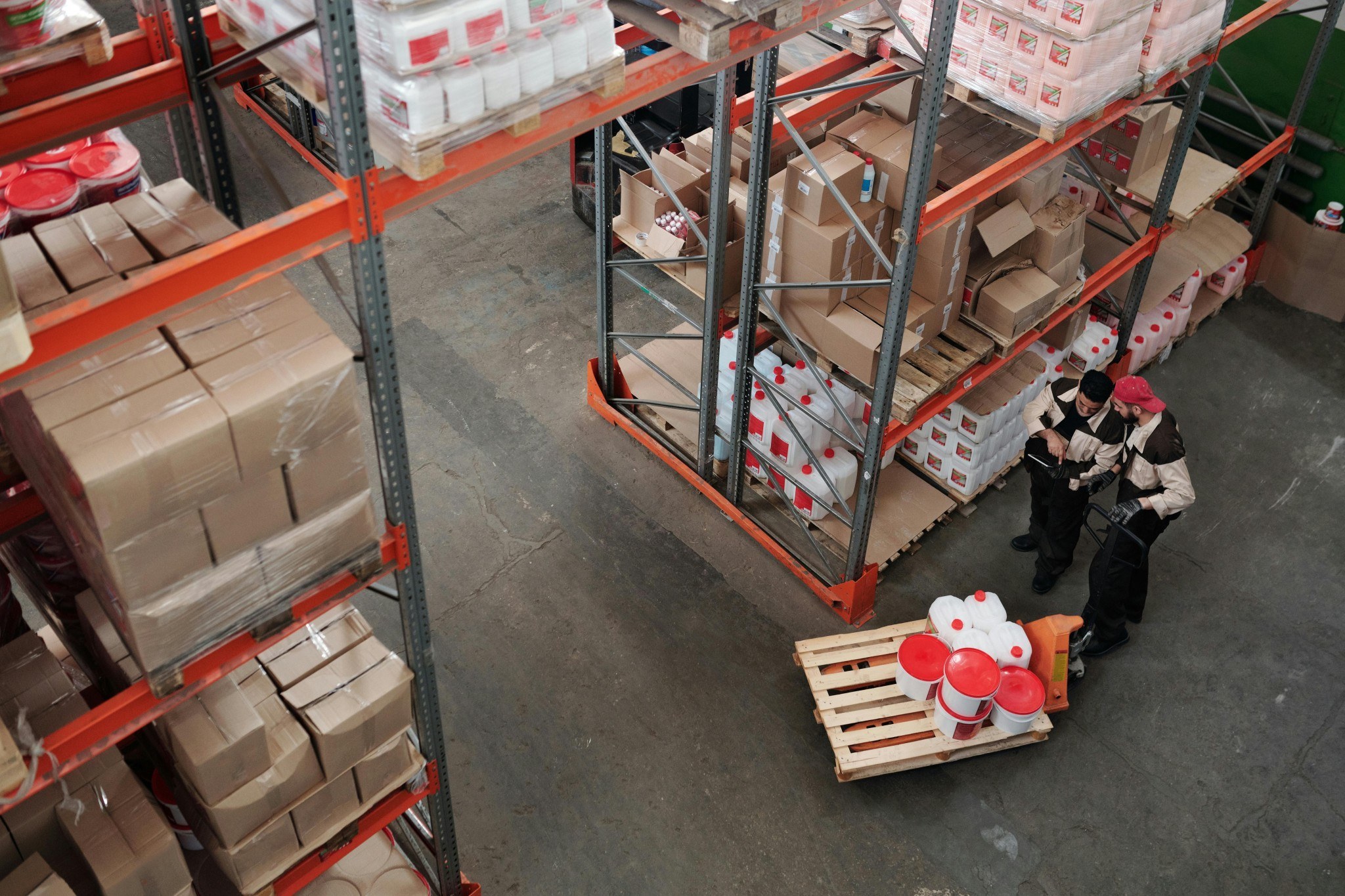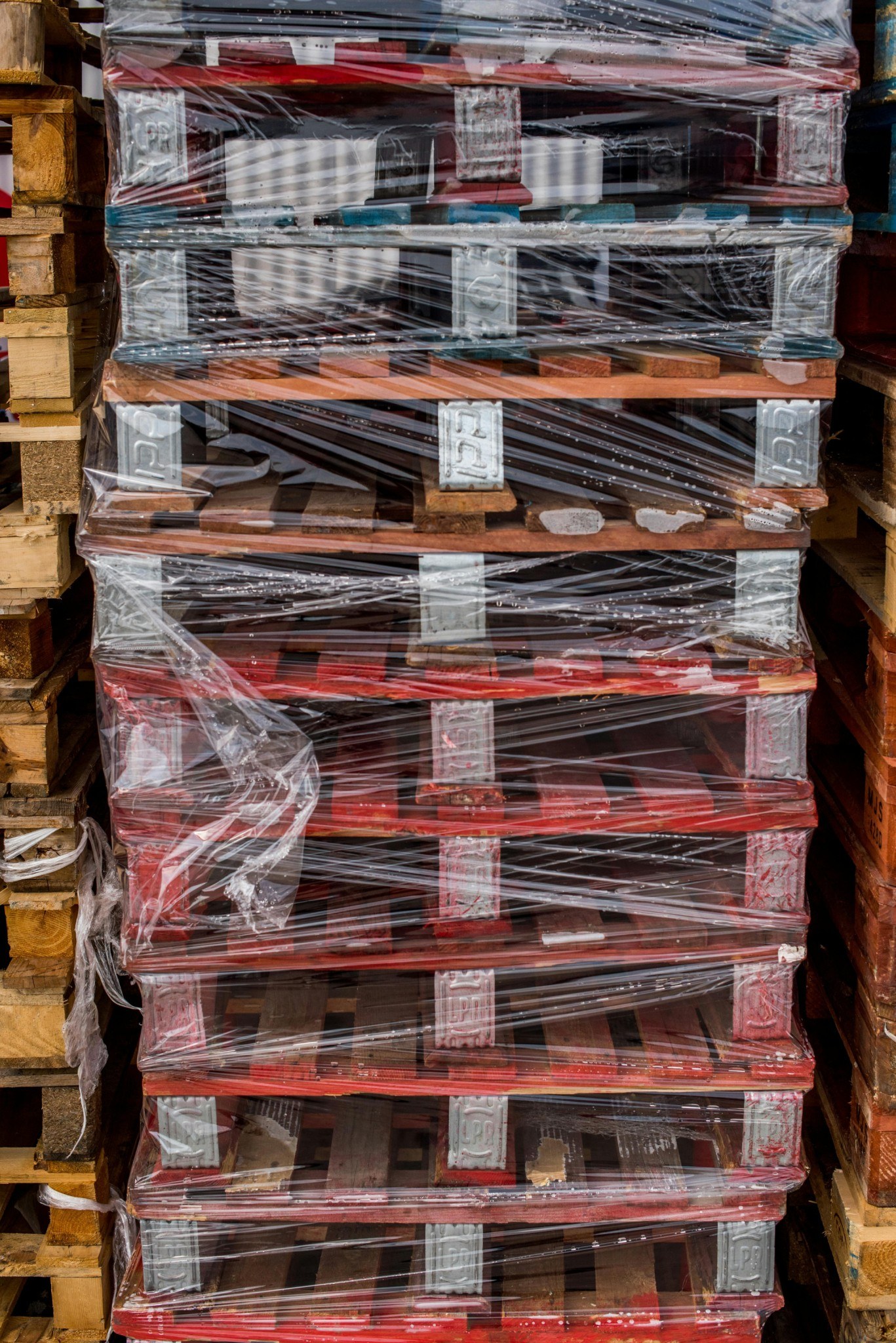Efficient pallet utilisation is a cornerstone for businesses looking to maximise productivity while reducing costs.
By adopting smart strategies for pallet optimisation, organisations can enhance their use of warehouse space, reduce operational costs, and significantly improve overall business operations.
This comprehensive guide will discuss optimising pallet usage, improving storage space, loading pallets, and stacking patterns to deliver superior results.
Let's Get Straight to the Point

Efficient pallet utilisation is essential for improving warehouse efficiency, reducing operational costs, and enhancing business productivity. By focusing on pallet optimisation, businesses can better utilise storage space, reduce wasted space, and achieve cost-effective shipping.
Key strategies include selecting the correct pallet size (e.g., euro pallets, plastic pallets), optimising pallet loads, and using secure stacking patterns.
Training staff on proper pallet loading techniques and regular auditing practices ensures ongoing improvements. Aligning with transport and customer requirements further reduces shipping costs and maximises overall efficiency.
Implementing these strategies as an ongoing process can minimise damaged products, improve space utilisation, and support sustainable, cost-efficient operations.
Understanding Pallet Optimisation
1. What is Pallet Optimisation?

Pallet optimisation refers to designing and managing pallet loads to maximise efficiency while minimising waste.
This involves carefully evaluating pallets, warehouse, and floor space to ensure every inch is utilised effectively. The aim is to create cost-effective solutions for storage, shipping, and handling processes.
By adopting pallet optimisation, businesses can prevent wasted space, reduce transportation costs, and improve warehouse efficiency. It also minimises damaged products during transit, providing better results across the supply chain.
Key aspects of pallet optimisation include:
Choosing the correct pallet size for specific products.
Ensuring that stacking methods create a stable load.
Using appropriate packaging materials to support product safety.
These steps help businesses achieve overall efficiency, reduce operational costs, and enhance productivity.
2. The Role of Pallets in Packaging and Shipping
Pallets are integral in packaging and shipping, acting as a sturdy base for various goods. They provide the foundation for pallet boxes, stretch wraps, and other materials that protect products during storage and transit.
Key pallet types include:
Solid deck pallets for enhanced durability.
Plastic pallets, which are reusable and eco-friendly.
Block pallets, which offer better weight distribution for heavier items.
Choosing the right pallet ensures that goods are safely transported and stored without unnecessary pallet damage. For example, euro pallets are widely used in Europe for their standard dimensions, making them ideal for cost-effective and efficient shipping.
Customised pallets can also cater to specific needs, such as accommodating oversized goods or products with unique handling requirements. Selecting the right pallet type is important for optimising warehouse space and ensuring smooth business operations.
Assessing and Planning for Pallet Optimisation
1. Evaluating Your Pallet Requirements
The first step in pallet optimisation is to evaluate your specific needs. This requires a detailed assessment of your products, shipping schedules, and storage requirements.
By understanding the unique challenges of your operations, you can develop a tailored approach to maximise warehouse efficiency.
Consider the following factors:
Product volume and weight limits: Ensure your pallets can handle your products' weight and dimensions without compromising stability.
Safety and damage prevention: Evaluate the likelihood of damaged products during handling and transit and choose solutions that enhance protection.
Customer requirements: Align your pallet strategy with customer expectations, such as specific sizes or packaging standards.
Addressing these factors can create a strategy that enhances space utilisation while reducing costs.
2. Choosing the Right Pallet Size
Selecting the correct pallet size is essential for achieving optimal warehouse space usage. Too large or small pallets can lead to wasted space, higher shipping costs, and inefficiencies in storage.
Common pallet sizes include:
Euro pallets (1200mm x 800mm): Standardised for European shipping.
Block pallets: Known for their durability and ability to support heavier loads.
Custom pallets: Tailored to meet unique product specifications.
Reusable plastic pallets are another excellent choice for businesses seeking sustainable, cost-effective solutions. Their lightweight nature and durability make them ideal for returnable supply chains.
Optimising Pallet Loads
1. Strategies for Optimising Pallet Loads

Efficient pallet optimisation begins with maximising pallet loads. This requires attention to packaging materials, pallet size, and stacking techniques to ensure that space is utilised effectively without compromising safety.
Key strategies include:
Reducing empty space within boxes to prevent product movement.
Selecting packaging materials that provide strength and protection during transit.
Ensuring that boxes are designed to fit standard pallet dimensions, reducing wasted space and improving stability.
Proper load distribution ensures a stable load that can handle the rigours of transport while minimising the risk of pallet damage. These strategies can lower transportation costs, reduce fuel consumption, and improve efficiency.
2. Efficient Loading Pallets
The method of loading pallets significantly affects the safety and stability of goods. Adopting the right stacking patterns ensures a stable load that minimises the risk of accidents and damaged products.
Types of stacking patterns include:
Aligned stacking: Ideal for uniform boxes, offering simplicity and easy access.
Staggered stacking: Provides additional strength by interlocking boxes for better weight distribution.
Additional measures like stretch wrap or strapping can further secure the load. Slip sheets and corner protectors are valuable for safeguarding fragile items and enhancing warehouse efficiency and product safety.
Implementing Pallet Optimisation Strategies
1. Training Staff on Pallet Loading and Unloading
Proper training is essential for optimising pallet loading processes. Employees must understand the principles of pallet optimisation, including how to achieve a stable load, prevent pallet damage, and maximise pallet space.
Effective training includes:
Visual guides illustrating ideal stacking patterns.
Hands-on sessions focusing on safe and efficient loading techniques.
Regular assessments to ensure consistency and adherence to best practices.
By investing in staff education, businesses can improve overall productivity and reduce risks associated with improper pallet handling.
2. Meeting Transport and Customer Requirements
Understanding the needs of transport providers and customers is vital for achieving cost-effective operations. This involves meeting weight limits, adhering to size constraints, and ensuring compatibility with automated equipment used by logistics partners.
Businesses aligning their pallet optimisation strategies with these requirements can enjoy reduced shipping costs, faster handling times, and improved customer satisfaction. Additionally, well-organised pallets minimise delays during transit, contributing to overall efficiency.
Monitoring and Adapting
Conducting Regular Audits and Assessments
Pallet optimisation is an ongoing process that requires continuous evaluation. Regular audits help businesses identify inefficiencies in pallet loads, stacking patterns, and packaging designs.
Steps for effective auditing include:
Measuring space utilisation in warehouse space and transit vehicles.
Evaluating the performance of current pallet types and packaging materials.
Analysing customer feedback to address potential areas of improvement.
Through consistent monitoring and adaptation, businesses can maintain high-efficiency standards while reducing operational and transportation costs.
Conclusion
Pallet optimisation is critical to the success of business operations that rely on shipping and storage. Businesses can achieve substantial cost savings while enhancing warehouse efficiency by focusing on the efficient use of storage space, proper pallet loads, and secure stacking patterns.
From selecting the correct pallet size to training staff and conducting regular audits, every step contributes to a streamlined, cost-effective process. Investing in reusable plastic pallets, adopting better stacking techniques, and aligning with customer needs ensures long-term improvements in overall productivity and reduced operational costs.
By treating pallet optimisation as an ongoing process, businesses can stay ahead in their industries, reduce damaged products, and optimise resources effectively. Ultimately, these strategies empower organisations to improve efficiency, minimise waste, and achieve sustainable growth.
FAQs
1. What is pallet optimisation, and why is it important?
Pallet optimisation is the process of maximising the use of pallets to improve space utilisation, reduce waste, and lower transportation costs. It ensures efficient warehouse operations, prevents damaged products, and boosts productivity.
2. How can I choose the correct pallet size for my business?
Select a pallet size based on your product's weight, volume, and shipping needs. Options like euro pallets or custom pallets can help optimise pallet space and minimise wasted space.
3. What are the best practices for loading pallets efficiently?
Use an appropriate stacking pattern (aligned or staggered) for stability, and secure loads with stretch wrap or strapping. Ensure the load is evenly distributed to create a stable pallet that prevents damage during transit.
4. How can pallet optimisation reduce operational costs?
Businesses can reduce transportation costs, fuel consumption, and storage expenses by maximising warehouse space and improving load efficiency. This leads to lower overall costs and improved business operations.
5. How often should I review my pallet optimisation practices?
Regular audits are recommended to identify inefficiencies in pallet loads, stacking patterns, and packaging materials. Treat pallet optimisation as an ongoing process to maintain warehouse efficiency and adapt to changing needs.

